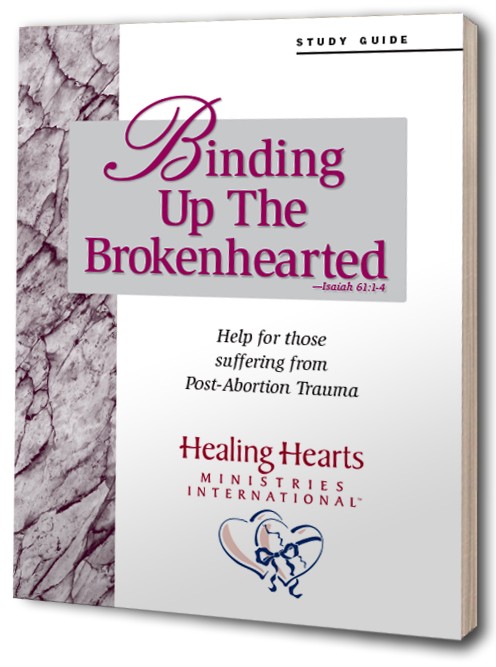
If you have come to realize and fully accept that you are dealing with post-abortion trauma, you already know that it is something that can take a very long time to manifest fully. Initially, you may have experienced sorrow or a sense of sadness at the time of the abortion, but perhaps months or years later you experience far deeper and most harmful feelings. That is exactly how post-abortion trauma can work, and it can cause us to behave radically different from our normal, healthier selves. It can make us anti-social, angry, and depressed.
It can also make us experience a loss of clarity about many things – including the abortion experience itself. To heal, you must accept and acknowledge the abortion as fully as possible. You must then accept and recognize that guilt and grief are preventing you from healing.
Author Sue Liljenberg summed it up concisely in her book “Binding Up the Broken Hearted,” when she wrote:
“We all thought that we could forget. Unfortunately, time does not heal all wounds. For many of us time is the enemy because months or even years down the line we begin to experience thoughts and feelings that we just don’t know how to cope with.”
One of the key reasons that we may be unable to cope with these feelings and thoughts is that we are not all that clear about them. For example, do you think you are feeling self-hatred or bitterness? Maybe you now distrust men or have started to punish yourself using drugs or alcohol?
In her book, Liljenberg offers several incredibly useful worksheets that ask readers to go through and check off the “Emotional Reactions”, “Behaviors”, and “Physical Manifestations” they are experiencing. This is a key first step because it helps the reader to acknowledge the basic truth of their current condition.
Storytelling as Therapy
Additionally, the author reveals the power behind sharing your story with others experiencing the same post-abortion trauma. In order to tell the story most effectively, though, the author provides several sections that “gather facts”. She reminds readers that, “months and even years later the facts of what actually happened are vague and out of order in our memories. Sometimes our imaginations will run wild, making the situation worse than it actually was, while in other cases the trauma can be so great that women actually block out large portions of the experience.”
Men too can experience the exact same reactions in response to a partner’s abortion, and so the detail and fact gathering is important for them as well.
Looking back at the tiny details such as your age at the time of the abortion, the date of the abortion, your relationship status, and whether you had any children at that time may seem inconsequential. However, starting with the basic facts forces you to clear your mind.
Simple storytelling, relating what circumstances led up to the pregnancy, if you had anyone to turn to for help, how those around you behaved or reacted to your unplanned pregnancy, and your thought process are essential steps.
Looking back, heading into the past and walking through it without a lot of emotional turmoil but more as a reporter, helps you to recall yourself before, during and after the abortion. Only in this way can you begin to see and examine the truth, setting aside rationalization and coping mechanisms and heading towards the real truth. Though the truth of abortion is incredibly painful, using resources like the book mentioned above, is one of the first steps towards healing.
To learn more about the process, visit Healing Hearts Ministries website.


